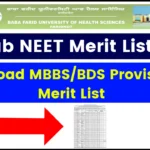
What is H-1B Visa: The H-1B visa is one of the most sought-after work visas for skilled professionals looking to work in the United States. If you’re considering applying for an H-1B visa, this guide will break down everything you need to know in a clear, easy-to-follow manner.
What is H-1B Visa
| Feature | Details |
|---|---|
| Visa Type | H-1B (Non-immigrant work visa) |
| Who Can Apply? | Professionals with at least a bachelor’s degree or equivalent experience |
| Annual Cap | 65,000 visas + 20,000 for master’s degree holders |
| Initial Duration | Up to 3 years, extendable to 6 years |
| Employer Requirement | Must sponsor the applicant and file an H-1B petition |
| Application Fee | Ranges from $460 to $4,000 (varies based on company size and premium processing) |
| Lottery System | Used if applications exceed the annual cap |
| Official Source | USCIS Website |
The H-1B visa remains a critical pathway for skilled professionals to work in the United States. While the process can be competitive and complex, understanding the eligibility criteria, application steps, and potential challenges can improve your chances of success. If you’re planning to apply, ensure that your employer follows the necessary steps and files your petition on time. For official details, visit the USCIS H-1B page.
What is the H-1B Visa?
The H-1B visa is a temporary work visa that allows skilled foreign professionals to work in the United States. The visa is granted for an initial period of up to three years but can be extended for a maximum of six years. The employer must sponsor the application and prove that the job requires specialized knowledge.
Additionally, the H-1B visa is a dual intent visa, meaning that while it is a non-immigrant visa, applicants may also pursue permanent residency (a Green Card) while working under this status. This flexibility makes it one of the most attractive work visas for professionals looking to build long-term careers in the United States.
Who is Eligible for an H-1B Visa?
To qualify for an H-1B visa, you must meet the following eligibility criteria:
- Have a Valid Job Offer: The job must be in a specialty occupation that requires a bachelor’s degree or higher.
- Possess the Required Education: You must have:
- A U.S. bachelor’s degree (or higher) in the required field, OR
- A foreign degree equivalent, OR
- Work experience that equates to a bachelor’s degree (3 years of work experience = 1 year of education).
- The Employer Must File the Petition: The U.S. employer must sponsor you and submit the required paperwork.
- Specialty Occupation Requirement: The job must be in an occupation that requires specialized knowledge, such as IT, finance, healthcare, engineering, and other professional fields.
- Wage Requirement: Employers must pay H-1B workers at least the prevailing wage for the occupation and location to ensure fair compensation.
H-1B Visa Application Process
Step 1: Employer Registration for the H-1B Lottery
- Every year, USCIS opens an H-1B registration window for employers.
- Employers must submit an electronic registration on the USCIS website during the designated period (usually in March).
- If applications exceed the annual cap, a random lottery selection occurs.
- Employers must pay a non-refundable registration fee of $10 per application.
Step 2: Filing the Labor Condition Application (LCA)
- Once selected in the lottery, the employer files a Labor Condition Application (LCA) with the U.S. Department of Labor (DOL).
- The LCA ensures that the employer will pay prevailing wages and provide fair working conditions.
- The employer must also attest that hiring a foreign worker will not negatively affect U.S. workers.
- LCA processing time is typically 7-10 days.
Step 3: Filing Form I-129 (H-1B Petition)
- After LCA approval, the employer files Form I-129 (H-1B petition) with USCIS.
- Required documents include:
- LCA approval notice
- Proof of employee qualifications (degree certificates, experience letters)
- Job description
- Company financial statements (if requested by USCIS)
- The standard processing time is 3-6 months, but premium processing (15-day turnaround) is available for an additional $2,500 fee.
Step 4: USCIS Processing & Decision
- USCIS reviews the application and may issue a Request for Evidence (RFE) if additional documentation is required.
- If approved, the I-797 approval notice is sent to the employer and employee.
- If denied, USCIS will provide reasons for the rejection.
Step 5: Visa Stamping (For Applicants Outside the U.S.)
- If you’re applying from abroad, schedule a visa appointment at a U.S. consulate or embassy.
- Required documents for visa interview:
- H-1B approval notice (I-797)
- Passport
- Job offer letter
- Educational certificates
- Processing times for visa stamping vary by country.
Step 6: Start Working in the U.S.
- Once the visa is approved, you can start working on October 1st of that fiscal year.
- H-1B transfer: If you change jobs, the new employer must file a new petition.
H-1B Visa Fees & Processing Time
| Fee Type | Amount |
|---|---|
| Registration Fee | $10 |
| I-129 Petition Filing Fee | $460 |
| ACWIA Education Fee | $750 (small employer), $1,500 (large employer) |
| Fraud Prevention Fee | $500 |
| Premium Processing (Optional) | $2,500 |
Visa Bulletin February 2025: India & China Get a Nudge, Other Categories Stalled!
No Visa Needed! 10 Countries Open for Indian Passport Holders in 2025!
Visa Applications for the F1 British Grand Prix 2025 – Check How to Apply!
Common Reasons for H-1B Visa Denial
- Lack of Specialty Occupation: The job does not qualify as an H-1B eligible role.
- Insufficient Qualifications: The applicant lacks the required degree or experience.
- Failure to Maintain Status: If an applicant has violated previous visa conditions.
- Incorrect Documentation: Missing or incorrect paperwork can lead to delays or denials.








